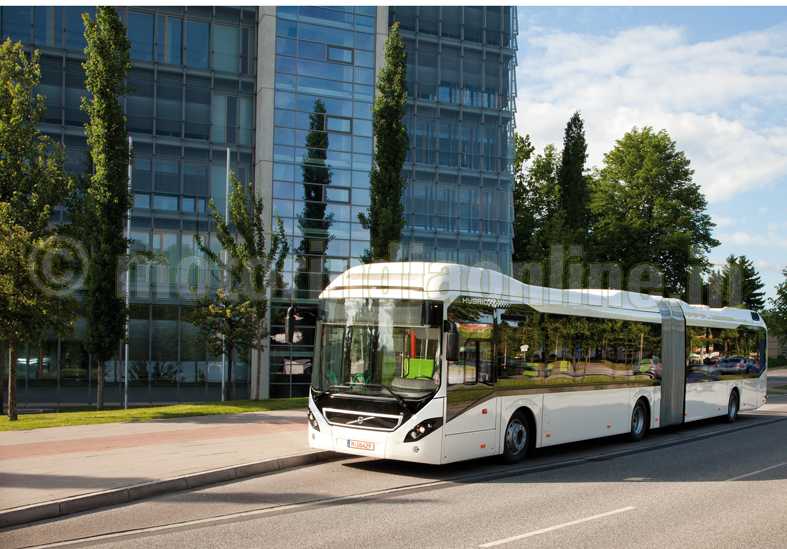
 Interest in energy-efficient vehicles that can operate completely or partly on electricity is growing worldwide. For Volvo Buses, which is the leader in the field, electromobility is the road to the future.
Interest in energy-efficient vehicles that can operate completely or partly on electricity is growing worldwide. For Volvo Buses, which is the leader in the field, electromobility is the road to the future.
“By expanding the use of hybrids and electric vehicles, we will be able to reduce energy consumption, air pollution, climate impact and noise. Accordingly, we will be able to meet several of the biggest challenges facing large cities worldwide,” says Mr. Håkan Agnevall, President of Volvo Bus Corporation.
Volvo Buses’ single-minded effort has made the company the market leader in hybrid buses. Since the introduction of the Volvo 7900 Hybrid in 2010, nearly 1,200 units have been sold to customers in 21 countries, while the model has been gradually developed. The current version with 39 per cent lower diesel consumption and climate impact than a corresponding diesel-driven bus is not only suitable for inner-city traffic but has the flexibility needed for transport in the suburbs or for to and from city centers.
 “The Volvo 7900 Hybrid has proved that the hybrid technology lives up to all expectations, particularly with respect to operational safety and cost efficiency. The bus is a commercial success and has paved the way for continued technology development and new applications,” adds Mr. Agnevall.
“The Volvo 7900 Hybrid has proved that the hybrid technology lives up to all expectations, particularly with respect to operational safety and cost efficiency. The bus is a commercial success and has paved the way for continued technology development and new applications,” adds Mr. Agnevall.
One example of this is the successful test in service of the three plug-in hybrids since May in Volvo Buses’ hometown of Gothenburg. The plug-in hybrids are initially intended to be used in scheduled service, with the possibility to charge the batteries via the electricity network. These hybrids are based on the same tested technology as the Volvo 7900 Hybrid, but the features include a larger battery pack and a current collector on the roof.
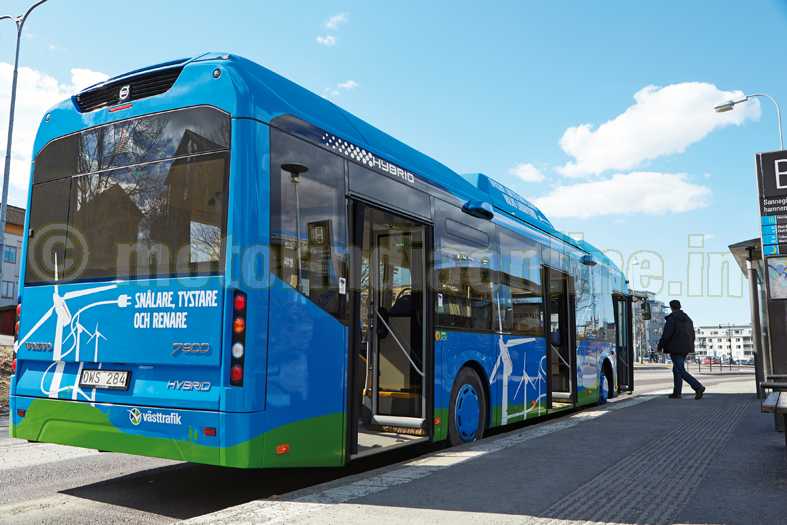 The plug-in hybrid which can operate on electricity alone more than two-thirds of the time is silent and completely emission-free. Diesel consumption and carbon-dioxide emissions are 70-80 per cent lower than in comparable diesel buses. The saving is considerable even after taking into account the electricity required to operate the plug-in hybrid. The total energy consumption will decrease by approximately 60 per cent. If a decision is made to replace the fossil-diesel fuel with biodiesel, as in Gothenburg, the climate impact will decrease by a full 90 per cent.
The plug-in hybrid which can operate on electricity alone more than two-thirds of the time is silent and completely emission-free. Diesel consumption and carbon-dioxide emissions are 70-80 per cent lower than in comparable diesel buses. The saving is considerable even after taking into account the electricity required to operate the plug-in hybrid. The total energy consumption will decrease by approximately 60 per cent. If a decision is made to replace the fossil-diesel fuel with biodiesel, as in Gothenburg, the climate impact will decrease by a full 90 per cent.
An additional eight plug-in hybrid will be tested in Stockholm in 2014. A number of large European cities are also already planning to test Volvo Buses’ plug-in hybrid. The commercial launch is scheduled for 2015.
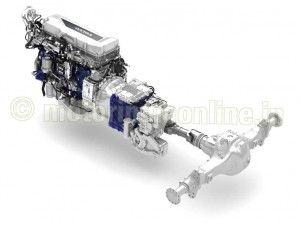 Mr. Agnevall further observes: “The plug-in hybrids in Gothenburg are functioning very well. Our measurement data shows that emissions and fuel consumption match the levels we anticipated. The response from drivers and passengers is also clearly positive.”
Mr. Agnevall further observes: “The plug-in hybrids in Gothenburg are functioning very well. Our measurement data shows that emissions and fuel consumption match the levels we anticipated. The response from drivers and passengers is also clearly positive.”
The way from plug-in hybrids to fully electric buses is not long. Within the framework of the ElectriCity co-operation project, the Volvo Group and a number of other players are focusing on developing Gothenburg’s first electric-bus line, scheduled to commence mid-2015. The new electric-bus line will be served by extremely energy efficient and quiet buses that operate on renewable electricity completely free from emissions. At least one of the bus-stops will be indoors.
“We want to demonstrate how fully electric vehicles can contribute to a better city environment and sustainable public transport. It is a vision that we are now beginning to realize”, he adds.
In parallel, the Volvo Group is collaborating with a number of other cities worldwide to create business models and system solutions for sustainable city traffic of the future, based on electromobility. In addition to hybrid and electric buses, Volvo is able to provide garbage as well as distribution trucks that operate completely or partly on electricity.
He concludes stating: “Within the Volvo Group, not only is there major technical expertise but also extensive experience in developing efficient, safe and environmentally adapted transportation systems in cities. A breakthrough for electric vehicles will generate completely new opportunities for traffic and city planners to seriously take a step into the future, and this is something that we want and can contribute to.”
Fuel saving with Euro VI
Volvo has now switched all models in its diesel engine series in Europe to the upcoming Euro VI emissions standard. The company has implemented a significant upgrade of its entire product program. The result: buses with lower fuel consumption, lower climate impact and lower emissions.
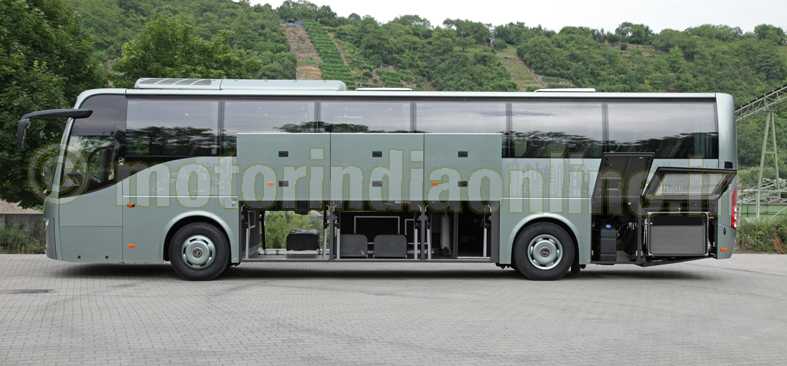 The biggest change is the introduction of three completely new diesel engines for Euro VI. The new 5-, 8- and 11-litre engines, respectively, with a power range of 240 to 460 hp have now replaced all current engine models for Europe. The step from Euro V to Euro VI entails that emissions of nitrogen oxide will be reduced by 87 per cent and the particle content in exhaust will be halved. At the same time, fuel consumption and climate impact of the buses will be reduced, thanks to a number of technical engine features and less weight in engine installation and the chassis.
The biggest change is the introduction of three completely new diesel engines for Euro VI. The new 5-, 8- and 11-litre engines, respectively, with a power range of 240 to 460 hp have now replaced all current engine models for Europe. The step from Euro V to Euro VI entails that emissions of nitrogen oxide will be reduced by 87 per cent and the particle content in exhaust will be halved. At the same time, fuel consumption and climate impact of the buses will be reduced, thanks to a number of technical engine features and less weight in engine installation and the chassis.
“The engines have been developed to achieve the lowest possible fuel consumption and also to achieve the extremely low emission levels required by Euro VI,” says Mr. Nils Nilsson, Euro VI Program Manager at Volvo Buses.
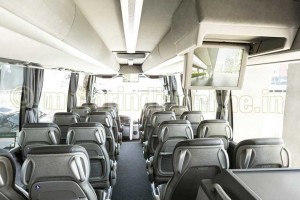 Ensuring that each bus has an engine that is actually optimized for the work it has to perform is also crucial to fuel consumption. Volvo’s tourist coaches, the Volvo 9700 and Volvo 9900, have now received 11-litre engines instead of the previous 13-litre, which will provide the power needed while reducing fuel consumption by two per cent.
Ensuring that each bus has an engine that is actually optimized for the work it has to perform is also crucial to fuel consumption. Volvo’s tourist coaches, the Volvo 9700 and Volvo 9900, have now received 11-litre engines instead of the previous 13-litre, which will provide the power needed while reducing fuel consumption by two per cent.
The new 8-litre engine has replaced the current 7- and 9-litre engines. The 7-litre engine was classified by the VTT testing institute as world leading in terms of fuel economy. The 8-litre, which is intended for the Volvo 8900 inter-city bus and the Volvo 9500 tourist coach, will provide similarly low fuel consumption despite higher performance. Compared with the 9-litre engine, fuel consumption is considerably lower (a full four per cent) as is the noise level.
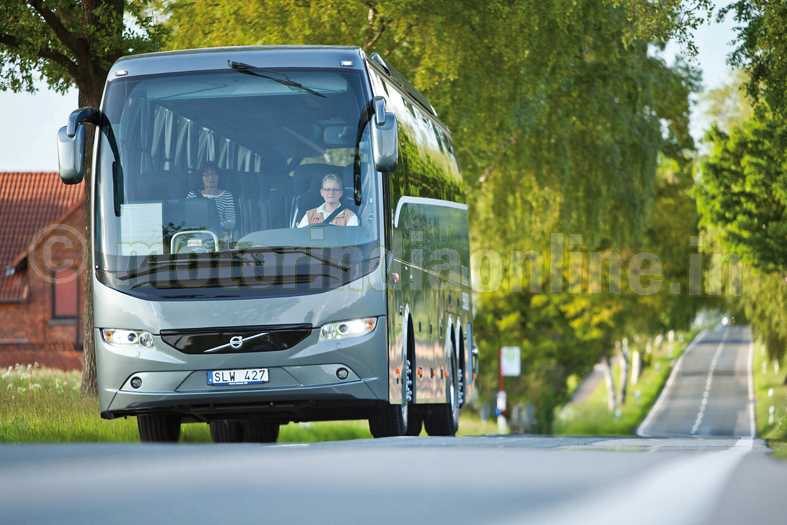 All hybrid buses have received a new, stronger 5-litre engine with 240 hp. The Volvo 7900 Euro VI hybrids reduce fuel consumption by up to 45 per cent compared to diesel buses Euro V. The 5-litre engine will also replace the current 9-litre engine in Volvo’s diesel double-decker which will now have more than 10 per cent lower fuel consumption. Both the 5-litre and the 8-litre engine are available for conventional diesel fuel and for biodiesel.
All hybrid buses have received a new, stronger 5-litre engine with 240 hp. The Volvo 7900 Euro VI hybrids reduce fuel consumption by up to 45 per cent compared to diesel buses Euro V. The 5-litre engine will also replace the current 9-litre engine in Volvo’s diesel double-decker which will now have more than 10 per cent lower fuel consumption. Both the 5-litre and the 8-litre engine are available for conventional diesel fuel and for biodiesel.
Saving fuel involves not only engines but also the driving techniques and use. Accordingly, Volvo Buses is also developing various services for fleet management and training of drivers. Using Volvo’s most recent telematic service – Volvo Bus Telematics – the operator will be able to monitor how each bus in the vehicle fleet is handled and how the different driving styles of the drivers impact fuel consumption. It will provide information that can be used to coach drivers in environmental driving, and will contribute up to 10 per cent reduction in fuel consumption. The hardware for Volvo Bus Telematics is now standard equipment in all Volvo hybrid buses.
Rendezvous with Mr. Akash Passey
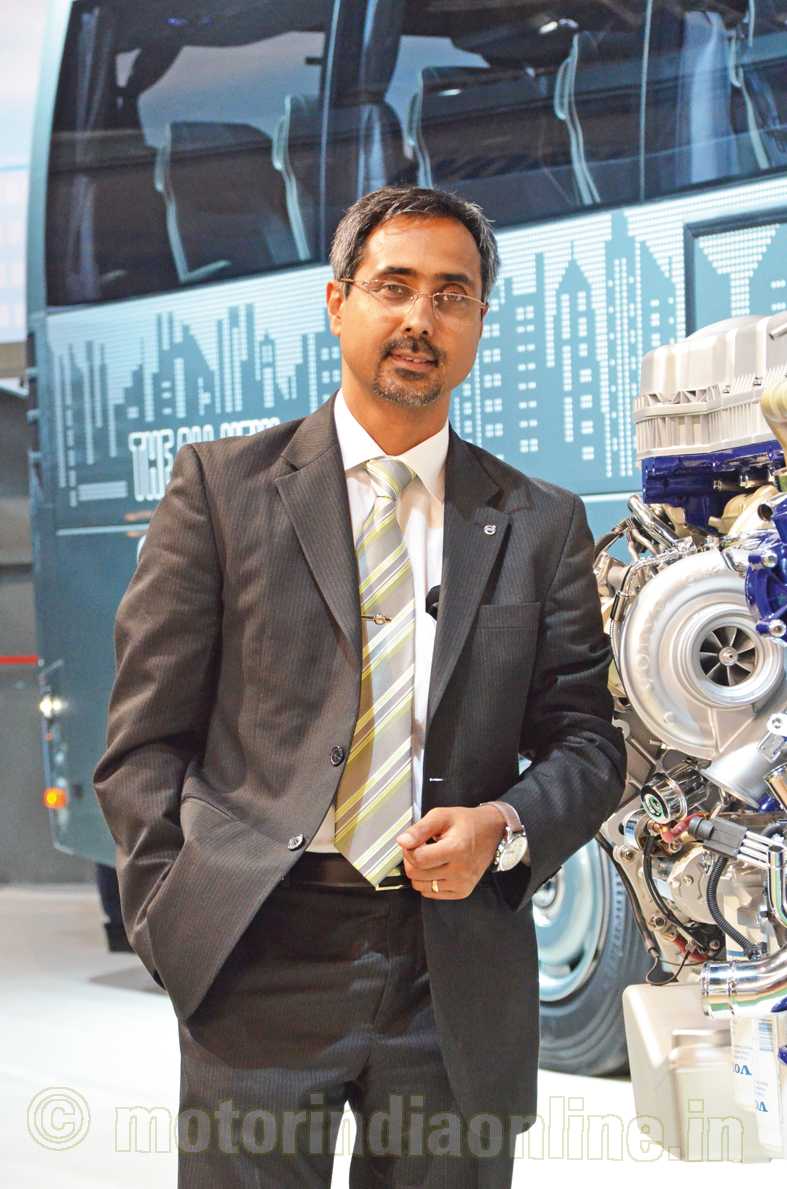 On the eve of the 12th anniversary of Volvo Buses in India, MOTORINDIA had the opportunity to have a quick chat with the company’s first Indian employee, Mr. Akash Passey at Busworld. Having started as Business Development Manager for Volvo Buses’ Indian operations, Mr. Passey has climbed up the ranks to become Senior VP – Volvo Bus Corporation, and President – Business Region International, Volvo Buses.
On the eve of the 12th anniversary of Volvo Buses in India, MOTORINDIA had the opportunity to have a quick chat with the company’s first Indian employee, Mr. Akash Passey at Busworld. Having started as Business Development Manager for Volvo Buses’ Indian operations, Mr. Passey has climbed up the ranks to become Senior VP – Volvo Bus Corporation, and President – Business Region International, Volvo Buses.
During the discussion, Mr. Passey spoke about of his long-standing relationship with Volvo Buses and retraced how the company has carved a niche for itself in the Indian bus market. He said: “It has been a wonderful experience to be associated with Volvo for over two decades. I had the opportunity to be their first employee in India, as Business Development Manager, in 1997, when Volvo started investing in India for its bus business. It was a period when modern European buses were considered very expensive for the conservative Indian market.”
Volvo entered the Indian bus market in 1997, initially focusing on the city bus segment and later shifted its focus to long-distance inter-city buses. After years of market study, the group launched its first city bus, an air-conditioned one, in 2001, built on a bus chassis fitted with a rear engine. In collaboration with its partners, Volvo came up with its first range of inter-city coaches in 2006. These vehicles set a new benchmark in terms of safety and comfort and had excellent noise-vibration harshness (NVH) when compared to those in the market then.
Volvo coaches also offered additional advantages such as large luggage space at the bottom of the vehicle and improved comfort with its well-built air-conditioning system, which were path-breaking features at the time. Today, after 12 years in India, the brand ‘Volvo’ has become synonymous with premium bus travel in the country.
Globally, Volvo has pioneered the adoption of alternative and more sustainable transportation modes. It is keen on bringing its hybrid and electric solutions to the Indian market as well in the near future. “In this Busworld show, we have showcased our hybrid solutions since we are moving towards hybrids and plug-in hybrids in Europe. We are proud to be one of the first manufacturers in the world to have 1,000 hybrids commercially running in 20 cities worldwide. We hope to bring these solutions to the Indian market soon”, added Mr. Passey.